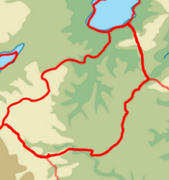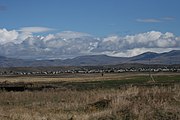Hacyinia: Difference between revisions
No edit summary |
No edit summary |
||
| Line 50: | Line 50: | ||
|population_estimate = | |population_estimate = | ||
|population_estimate_year = | |population_estimate_year = | ||
|population_census = {{ | |population_census = {{increase}} 36,950,235 | ||
|population_census_year = 2022 | |population_census_year = 2022 | ||
|population_density_km2 = 35.83 | |population_density_km2 = 35.83 | ||
|population_density_sq_mi = | |population_density_sq_mi = | ||
|GDP_PPP = | |GDP_PPP = $572.72 billion | ||
|GDP_PPP_rank = | |GDP_PPP_rank = | ||
|GDP_PPP_year = | |GDP_PPP_year = 2021 | ||
|GDP_PPP_per_capita = | |GDP_PPP_per_capita = $15,500 | ||
|GDP_PPP_per_capita_rank = | |GDP_PPP_per_capita_rank = | ||
|GDP_nominal = | |GDP_nominal = $221.70 billion | ||
|GDP_nominal_rank = | |GDP_nominal_rank = | ||
|GDP_nominal_year = | |GDP_nominal_year = 2021 | ||
|GDP_nominal_per_capita = | |GDP_nominal_per_capita = $6000 | ||
|GDP_nominal_per_capita_rank = | |GDP_nominal_per_capita_rank = | ||
|Gini = 41.9 | |Gini = 41.9 | ||
| Line 165: | Line 165: | ||
}} | }} | ||
<br> | <br> | ||
Hacyinia is a {{wp|Devolution|devolved}} {{wp|unitary state}}. It operates as a semi-{{wp|constitutional monarchy}} with a {{wp|Bicameralism|bicameral}} legislature. The Head of State is the {{wp|Khan}} while the Head of Government is the {{wp|Prime Minister}}. The | Hacyinia is a {{wp|Devolution|devolved}} {{wp|unitary state}}. It operates as a semi-{{wp|constitutional monarchy}} with a {{wp|Bicameralism|bicameral}} legislature. The Head of State is the {{wp|Khan}} while the Head of Government is the {{wp|Prime Minister}}. The legislature, called the | ||
The upper house of the legislature is comprised of xxx members, who themselves are the leaders of the {{wp|non-sovereign monarchy}}s of the country. | |||
The lower house is elected via ***. | |||
The government of Hacyinia is divided into *x amount of autonomous or semi-autonomous regions, | The government of Hacyinia is divided into *x amount of autonomous or semi-autonomous regions, | ||
Revision as of 00:55, 30 July 2022
This article is incomplete because it is pending further input from participants, or it is a work-in-progress by one author. Please comment on this article's talk page to share your input, comments and questions. Note: To contribute to this article, you may need to seek help from the author(s) of this page. |
Hacyinia | |
|---|---|
|
Flag | |
 Location of Hacyinia on Kylaris in dark green | |
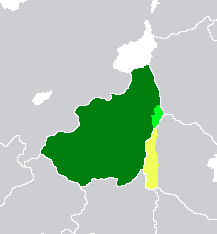 Hacyinian territory under central control in dark green, uncontrolled territory in light green | |
| Capital and largest city | Choch |
| Recognised national languages | Pardarian, Gaullican |
| Recognised regional languages | Dehgan, Kizik, Ziba, Majgar, Ukilen |
| Other languages | Chanwan |
| Ethnic groups | 40% Oroqic 40% Majgar 60% Kiziks 22% Pardarianic 20% Asud 40% Dehgan 40% Gurani 15% Ukilenic 80% Ukilens 20% Khoits 15% Chanwan 6% Dezevauni 2% Other |
| Religion | 75% Badist 10% Irfanic 5% Chanwan Folk Religion 4% Solarian Catholicism 3% Zohism 3% Other |
| Demonym(s) | Hacyinian |
| Government | Devolved unitary semi constitutional monarchy |
• Khan | Makbule Arda Khan |
| Erasyl Rinat | |
| Legislature | National Kurultai |
| Jïırma jeti Töñirek ("Circle of 27") | |
| Buqaranıñ Kurultai ("Council of the Masses") | |
| Establishment | |
• Bessharian Khanate established | 1789 |
• Formation of the Hacyinian Khanate after incorporating xxx and xxx | 1845 |
• Establishment of the Kingdom of Hacyinia | 1935 |
| Area | |
• Total | 1,031,116.801 km2 (398,116.423 sq mi) |
| Population | |
• 2022 census | |
• Density | 35.83/km2 (92.8/sq mi) |
| GDP (PPP) | 2021 estimate |
• Total | $572.72 billion |
• Per capita | $15,500 |
| GDP (nominal) | 2021 estimate |
• Total | $221.70 billion |
• Per capita | $6000 |
| Gini | 41.9 medium |
| HDI (2020) | 0.654 medium |
| Currency | Hacyinian som |
| Date format | dd-mm-yyyy |
| Driving side | right |
| Internet TLD | .ha |
Hacyinia, officially known as the Hacyinia, is a country in Coius. It borders Dezevau and Lavana to the east, Zorasan to the north and west, Shangea to the southwest, and Zomia to south. A landlocked country, it straddles the boundary between Southeast Coius, the Great Steppe, Greater Pardarian and Greater Southeast Coius physically and culturally. The 31st largest country , Hacyinia occupies 1,031,116.80 km2. The physical landscape of the country is defined by mountainous terrain to the west, vast and sprawling steppe through much of the central area of the country, and fertile river deltas in the east along the shore of Lake Zinabad. The 37 million citizens are multi ethnic, multi lingual and multi religious, who can trace their heritage from the mosaic of nomadic and settled peoples that have influenced the countries history. Population-wise, Hacyinia is roughly the 37th most populous country in the world.
Most of Hacyinia's history has been as the vague borderlands of various larger, centralized powers nearby sans for a few gleaming city states along trade routes or recognized khanates in the steppes. The lands of Hacyinia have been conquered by various powers from near, far and homegrown. The modern state of Hacyinia starts in the 18th and 19th century, when the Bessharian Khanate established itself in the western side of the country - an initially loose confederation of ungovernable steppe tribes and rebellious city states that secured de facto independence from a declining Aguda Empire. After being recognized as an independent state and a protectorate of xxx, the Bessharian Khanate began incorporating smaller khanates and tribes in the immediate area - consolidating into the Hacyinian Khanate. The former Gaullican colony of Karasam as federated into Hacyina in 1935, officially joining with the country in 1955, and establishing the countries current borders.
Etymology
Hacyinia (Pronounced: /hɑ:sin.i.ə/, Listen) comes from the Old Pardarian word "hamicyia", meaning rebellious. The descriptor of the steppe peoples eventually came to refer to the steppe area south of Pardaran proper by the 10th century CE, encompassing much of the modern day border of the state that now bears its name. Hacyinia was first used as the name of a state in 1845 upon the formation of the Hacyinian Khanate.
History
Hacyinia has a long history, dominated mostly by the nomadic peoples that have ruled from the steppes as well as powerful empires who have conquered and held sway over the area. Although the area has long been inhabited with archeological records showing evidence of human settlement dating back to 6,000 BCE; the first recorded peoples in the area date back to the second millennia B.C with !Scythian/!Saka nomads domaining the steppes and settled Pardardian speaking city states establishing themselves in the eastern river deltas by Lake Zinabad, as well as in the foothills of the western mountains. The Chanwan had long called the highlands of western Hacyinia home and began establishing their own polity's in the highlands of the Huashan mountain range. In the southwestern steppe, in the modern day borderlands between Hacyinia, Zomia and Lavana, the proto-Oroqic Ashina held sway and competed with the !Scythians/!Saka for control of the steppe. The Ashina were able to establish several of their own powerful states controlling parts of Southeast Coius until just before the end of the 1st century CE.
Geography
Photograph of the central steppe with a ger district in the background
- Haraz river.jpg
Photograph of the river deltas of Karasm
At 1,031,116.80 km2, Hacyinia is the 15th largest in Coius, and the 31st largest in the world. It is slightly smaller than Behera and slightly larger than Belmonte. A landlocked country, it has a minimally varied terrain. The country is overwhelmingly steppe land. In the west there is the Transhuashan foothills and the plateau of the Great Steppe, while in the east there is the riparian inflowing rivers deltas to Lake Zinabad. The elevation of the country varies greatly however, with some areas being several thousand meters above sea levels and others being several hundred meters below sea levels. Generally elevation rises the in the west and closer to the Huashan mountains. The country is entirely considered to be within a Temperate grasslands, savannas, and shrublands biome, with a temperate climate. Precipitation is fairly high, and generally there is mild winters with warmer summers. The increasing desertification of nearby Zorasan has had a major impact on eastern Hacyinia in particularly, with notable land degradation impacting the agricultural output of eastern Hacyinia.
Arable land is at a minimum and mostly of the countries arable land is concreated in the east along in the river deltas and the shore of Lake Zinabad, or more limitedly in the west in mountain oases supplied by the melting glacial water of the Huashan mountains. The central steppes soil is incapable of supporting any sort of large scale agriculture, although it is more than capable of supporting large scale animal husbandry both historically and modern day. Much of the steppe has very limited water supply sans a few lakes and seasonal rivers that occasionally form. Water rights is a serious political concern, both domestically as well as internationally. Much of the water resources in the country are located in Karasm and are used to support extensive commercial agriculture. The shrinking of Lake Zinabad is of great concern to the Hacyinian government, and the Karasmic government before that.
Wildlife
Bactarian deer! Bactarian camels! Wolves! There's brown bears in Central Asia apparently? Snow leopards, cut & paste from stuff. Horses!
Demographics
The population of Hacyinia is 36,950,235, per 2022 estimates. Roughly 38% of this population, or 14 million people, live in Bessharia while the remaining 22.9 million or 62% of the population live in Karasm. Hacyinia is roughly the 37th most populous country in the world. The population of Hacyinia is fairly young, with about a third of the population under 14 and over half of the population is under thirty which has placed large strains on it's economy and has contributed to emigration. The population of Karasm is mostly urban, with about a third of the country living in rural towns as farmers or agriculturalists and a small percentage of nomadic peoples who are primarily ethnic Majgars. In Bessharia, a little under half of the population lives in a handful of urban centers of the country while the rest of the population lives rurally or nomadically. Bessharia has one of the highest rates of nomadic populations in the world, with about a quarter of the population living nomadically or semi-nomadically.
The largest individual ethnic groups are the Oroqic Kiziks and the Pardarian Bukhoris, both of whom are largely concreated in Karasm and make up most of the population in Karasm. Minorities within Karasm include a small population of ethnic Dezevaunis who's history in Karasm is related to the Aguda Empire resettling ethnic Dezevaunis in it's controlled terrority. In Bessharia there is a multitude of ethnic groups namely the Majgar, Iasi, and Ukilen. The Chanwan make up a sizeable minority of the Bessharian population and their history with the majority ethnic groups in Bessharia has been mixed. Ethnic conflicts within either Karasm or Bessharia is actually rare, with generally a shared history and culture uniting different ethnic groups. Ethnic conflict between "Bessharian ethnicities" or "Karasmic ethnicities" is however common, i.e. conflict between Kiziks and Majgars or Bukhoris and Ukilen. Much of the ethnic conflict relates to issues such as land usage and land rights, with the historically settled Karasmic peoples and the nomadic Bessharian peoples competing for land that is increasingly damaged by climate change in addition to historic and current political grievances.
As for religion, Hacyinia is similarly divided. About 49% of the population of Hacyinia is Irfanic, the majority of whom who live in Karasm. 40% of the population is Badist, the majority of whom who live in Bessharia and are members of the Thin Air sect. There is a small minority of Badists within Karasm, namely the Pure Water Badi sect. Religious minorities are small, with small numbers of Solarian Catholics scattered about the country in concreted pockets in the countries urban centers as a result of Gaullican colonial and protecterate influence. Zohist worshippers can similarly be found throughout the country, primarily in cities formerly tied to the Silk Road. The Chanwan folk religion is still actively followed by much of the Chanwan peoples in Bessharia, and has one of the highest rates of followers in the world. Religious relations between Irfanic and Badist worshippers has often been contentious. Religious identity in Hacyinia is often tied to ethnic identity, and discrimination is common. Followers of the minority religions of the country have long practiced subduly, with missionaries or attempts are proselytizing met with harsh reactions from both state and non-state agents. Outright violent attacks on worshippers of a different religion on the sole basis of their religion is thankfully rare, but not uncommon.
Linguistics in the country is complicated. There is a total of seven major ethnic groups in Hacyinia, all of whom who speak vastly different languages from each other. Even amongst the collection of Oroqic or Pardarian peoples, the Kizik and Majgar or Bukhori and Iasi languages aren't mutually intelligible. Bi or tri linguicism in the country is incredibly common throughout the entire population. Hacyinia recognizes two national languages that serve as the countries lingua franca, Pardarian and Gaullican. The usage of the Pardarian language is related to the countries historic and current place in Greater Pardarian and Gaullican was introduced when the entirety of Hacyinia was either directly colonized or placed under the protection of Gaullica. Both languages are utilized frequently and it's fairly common for someone to speak their "natural" ethnic language as well as be able to speak, with vary fluency, both Gaullican and Pardarian. The use of Gaullican is particularly high in Bessharia, who began widepsread education in Gaullican in the mid 1800s while in Karasm, mostly due to Irfanic influence, Pardarian is more widely utilized.
Government and Politics
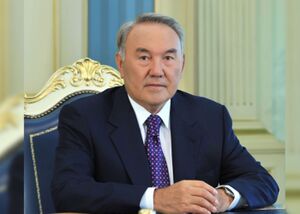
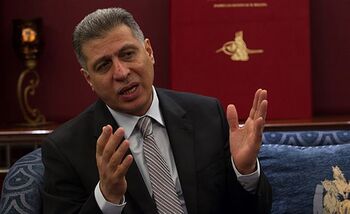
Hacyinia is a devolved unitary state. It operates as a semi-constitutional monarchy with a bicameral legislature. The Head of State is the Khan while the Head of Government is the Prime Minister. The legislature, called the
The upper house of the legislature is comprised of xxx members, who themselves are the leaders of the non-sovereign monarchys of the country.
The lower house is elected via ***.
The government of Hacyinia is divided into *x amount of autonomous or semi-autonomous regions,
Economy
12th largest oil producer in the world (1,229,357 bbls per day), wealth of mineral resources. Other major exports include cotton and livestock. The economy is buoyed by being surrounded by larger, wealthier and stabler states. However, as a landlocked country, it's economy is also hindered by it's lack of natural sea access. It's wholly reliant on shipping it's goods through xxx because of political circumstances, and any freeze in relations would tank the economy.
Cotton is referred to as "white gold" in Hacyinia. Introduced by the Gaullicans, massive plantations were set up in eligible areas. Commercial growing of cotton spread throughout Hacyinia, and currently now operates as a massive cash crop for the country.
Culture
Culturally Besshar is more turko-mongol (Kazakh/Mongol), Karasm is more turko-persian (Tajik/Uzbek). Heavy influence from SE Asia for both Karasm + Bessharia, I imagine national food sorta similar to the Uyghurs/Hazaras? You know we be making rugs. Besshar is Badist, Karasm is Irfanic. some Euclean influence penetrated Besshar/Karasm.
- Architecture and arts: Those chechen towers common in Bessharia, Karasm is known for cities like !Bukhara and !Samarkand which is filled with beautiful Pardarian style buildings and architecture. - Clothing: folk clothing: Deels for Bessharia. Clothing style for Karasm I feel like would be more Persianized, (Iranian/Uzbek/Tajik traditional clothing). Traditional caps pretty common for both countries, with Telpeks common in Karasm + Papakha in Bessharia - the Doppa/Tubeteika/bakol kinda common throughout. I think we would see a mix of traditional/"modern" clothing, with Karasm being more "modern" and Bessharia being a bit more "traditional."
Sport
Kokpar also very popular, as well as other equestrian games/activities owing to countries steppe and horse culture. Mongolian wrestling/Turkic wrestling also popular. Something like Naadam very possible. Olympic weightlifting also very successful and popular sport between two countries. Rugby, in the union/league/sevens variants, is the most common team sport in the country. Has roots in "pushball" ïterwdop (kazakh)/ tülkhekhbömbög (mongolian) a traditional sport in the country that has roots in cultural influences gained during the tagmic migrations (Lelo burti)
Cuisine
Due to influence from neighboring Dezevau, ganome's are ubiquitous throughout the country. Hacyinia has a strong coffee culture.

